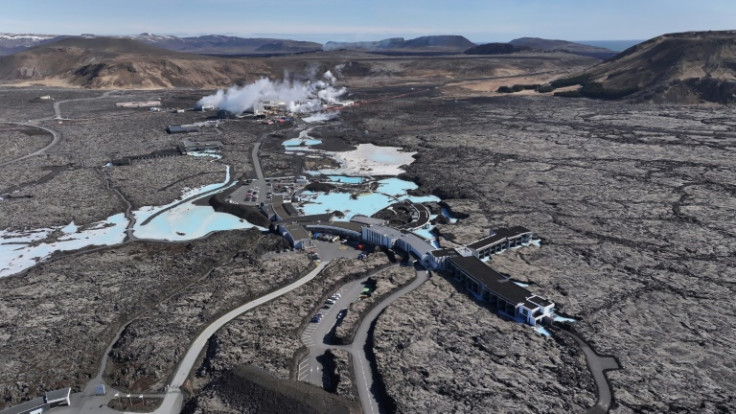
Orange lava bubbles and pops, occasionally spewing large fountains from a volcano that has been erupting for a month in Iceland, the second-longest eruption since the region's volcanic activity reawakened in March 2021.
"It's continuing at a pretty stable rate at the moment and we don't see any real signs that it will end in the near future," Benedikt Ofeigsson, geophysicist at the Icelandic Meteorological Office (IMO), told AFP.
On March 16, lava burst out of a crack in the ground at Sundhnukagigar, on the Reykjanes peninsula in southwestern Iceland, and has flowed ever since.
The volcano was pumping out some 3.6 cubic metres of lava per second in the most recent measurements taken on April 9, according to the IMO.
Other eruptions in the same region in December, January and February -- preceded by the evacuation in November of 4,000 residents in the nearby town of Grindavik -- likely created favourable conditions for a lasting eruption.
"Now there is an open channel to the surface," Ofeigsson said.
Magma is making its way through the Earth's upper crust from a depth of at least 10 kilometres (6.2 miles).
This scenario is similar to the first eruption in the region, near Mount Fagradalsfjall in March 2021, which lasted six months.
By contrast, the other eruptions in the past few months have only lasted a few days.
In addition, the ground has been observed rising -- so-called inflation -- in the nearby area of Svartsengi, home to a geothermal plant providing electricity and water to 30,000 people on the peninsula.
The inflation suggests that "all the magma coming from this depth doesn't have the capacity to go straight to the surface (and) is partly stored in this magma storage in Svartsengi," Ofeigsson said.
Until March 2021, the Reykjanes peninsula had not experienced an eruption for eight centuries.
Volcanologists now believe a new era of seismic activity has begun in the region.
While the area's previous eruption sites have been open to the public, authorities have closed this one, wary of visitors flooding the evacuated town of Grindavik.
"I wanted to see some of the lava fields, maybe some flowing lava, get up close to a volcano. It was part of the whole 'land of ice and fire' thing, right?" tourist David Cordova, a 46-year-old engineer from Texas, told AFP.
He still hoped to get "some cool visuals" flying his drone over the crater.
Many tourists park by the roadside near the Blue Lagoon geothermal spa to take in the plumes of smoke rising from the ground just past a section of road blanketed by flowing lava in February and March and subsequently rebuilt.
The Blue Lagoon, Iceland's biggest tourist attraction, now resembles a fortress, protected by a hastily-built wall of earth towering a dozen metres high.
The spa's turquoise waters reopened to the public on April 6 after a three-week closure.
The spa has however had to close temporarily for two days since then due to air pollution linked to gas emissions and unfavourable winds.
The small fishing town of Grindavik, bathed in glorious spring sunshine, is now a ghost town.
A few die-hard residents have returned to live in neighbourhoods less at risk from the lava flow, but the vast majority packed their belongings long ago, accepting an offer to sell their homes to the state.
Thorkatla, a realtor specially created in response to the emergency, has received 675 applications, with the state offering 95 percent of the estimated current value. The first sales went through last Friday.
"We, at least at this point, need to start a new life, not here in Grindavik," resident Solny Palsdottir told AFP.
Her house, which she built herself 15 years ago and where she and her husband raised their five sons and a dog, is now uninhabitable, the structure cracked by the thousands of earthquakes in November that preceded the wave of eruptions.
Just a few blocks away on the edge of town, lava flowed into the streets of Grindavik during the January eruption, engulfing three homes.
Yet Palsdottir refuses to say goodbye for good.
"I really believe in my heart that I will come back, even though no one can say if it will be after some years or one year," she said.
"I feel it in my heart that Grindavik will bloom again."










